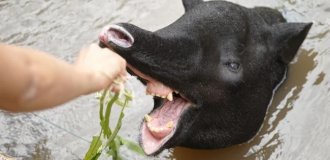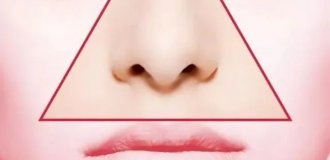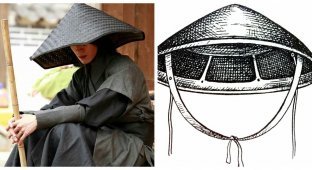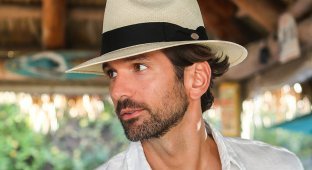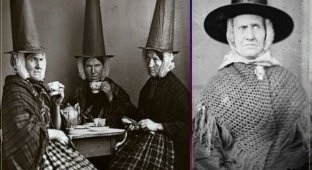Why do the Spanish Civil Guard wear such fancy leather hats? (5 photos)
If you've ever seen the parades for Spain's national holiday on October 12th, then you've most likely seen the Spanish Civil Guard marching in strange and rather bizarre black hats. 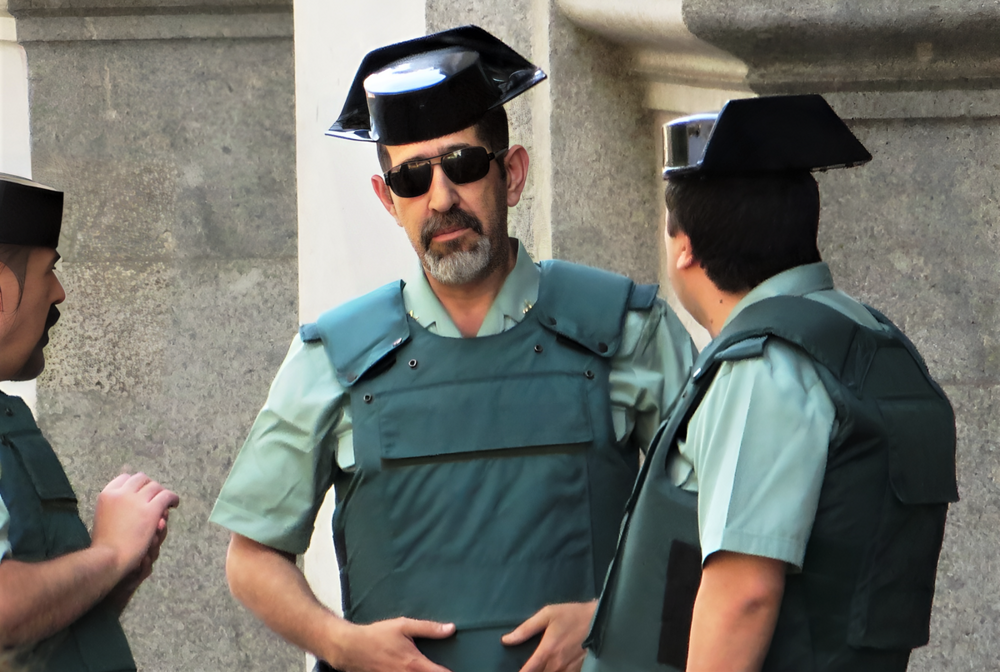
The main feature of the hat is that it has four points with a curved head at the back. Although this is what it looks like today, its material, shape, size and colors have changed over time.
In Spain, this headdress is called "tricornio" and occupies a rather important place in culture and history.
A short excursion into history 
The origins of this bizarre headdress go back almost to the very founding of the Civil Guard.
The Guardia Civil of Spain was founded as a national police force in 1844 during the reign of Queen Isabella II of Spain, by Navarrese aristocrat Francisco Javier Giron, 2nd Duke of Ahumada and 5th Marquis de las Amarillas, a descendant of the 11th generation Aztec Emperor Moctezuma II .
The Guard was primarily created to suppress revolutionary sentiment in rural Spain and prevent the spread of anti-monarchism during the Queen's reign.
Those days were not easy for the nation; political conspiracies, coups d'état and economic decline were constant occurrences. The population constantly suffered and openly expressed their discontent.
The Guard was also tasked with putting an end to banditry in the province of Andalusia, which had become notorious for the endless robberies and muggings of merchants, travelers and even foreign tourists.
Bandits were such a problem in the region that local authorities had difficulty getting rid of them.
The favorite and original method of attack by local robbers was to quietly sneak up on the victim from behind, wrap his head and hands in a cloak, and then rob him. If a person resisted, the bandit instantly knocked him to the ground with a deft blow of a knife.
The aesthetic value of the guardsman's appearance was given paramount importance, so it was given the highest priority. Especially the hat 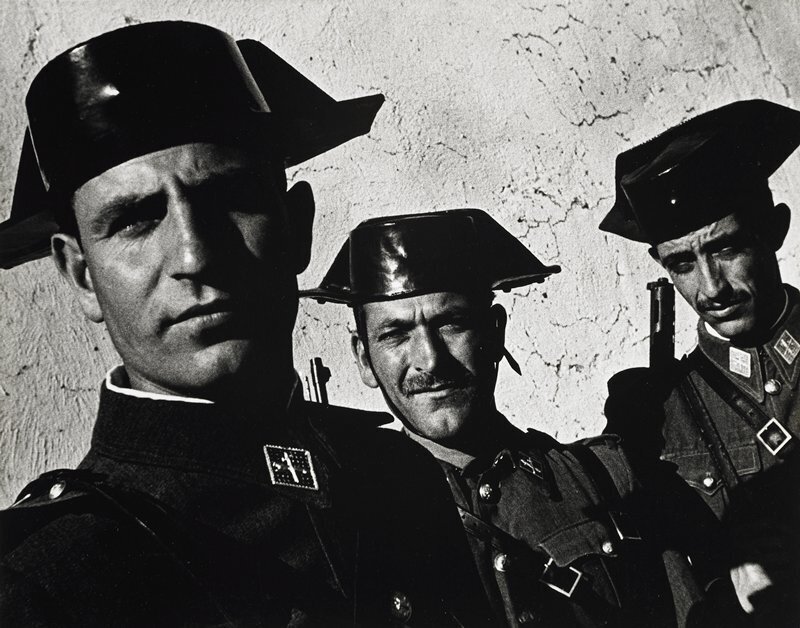
The Civil Guard was an instrument of repression and the maintenance of civil order. The guardsmen were feared, as were their uniforms.
Moreover, nothing signified the repression of the Spanish Guards better than their famous tricornio hats, which were created in this design solely as a threatening attribute.
The founder of the Gendarmerie, the aristocratic Don Francisco Javier Giron y Ezpeleta, Duke of Ahumada, believed that it was important to create a police force that the Spanish population would respect and fear at first glance.
To achieve this, he felt it was important to design a hat with pointed and menacing angles, but that the hat resembled the Morion, the steel helmet used by the Spanish Tercios, the famous and feared Spanish infantry formation of the 16th century. 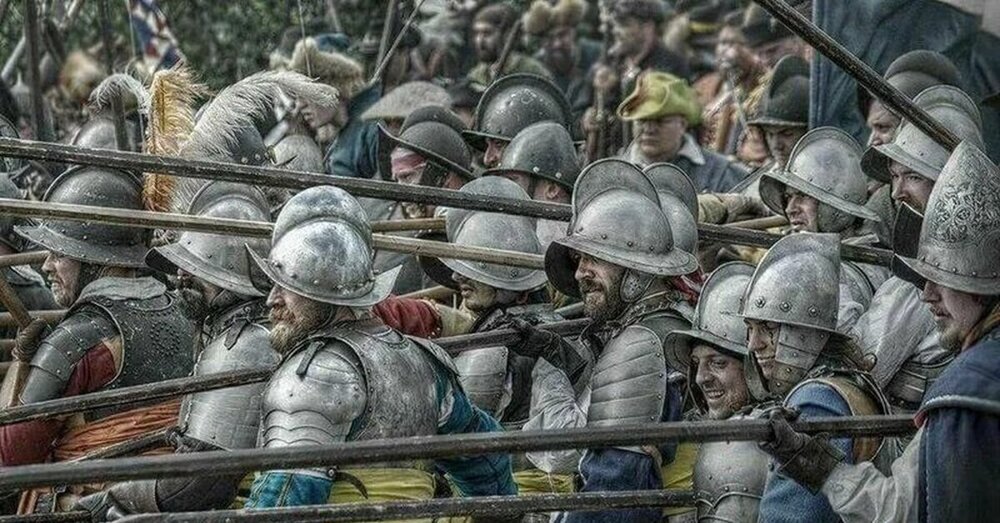
This is how the tricornio hat appeared (inspired by an ancient helmet and a classic cocked hat).
Queen Isabella II had the final say; supported the design of this hat and soon the tricornio became the official headdress of the entire Civil Guard.
The hat is black in color, rounded at the front, and at the back it is something like a head with two points or wings protruding on both sides. 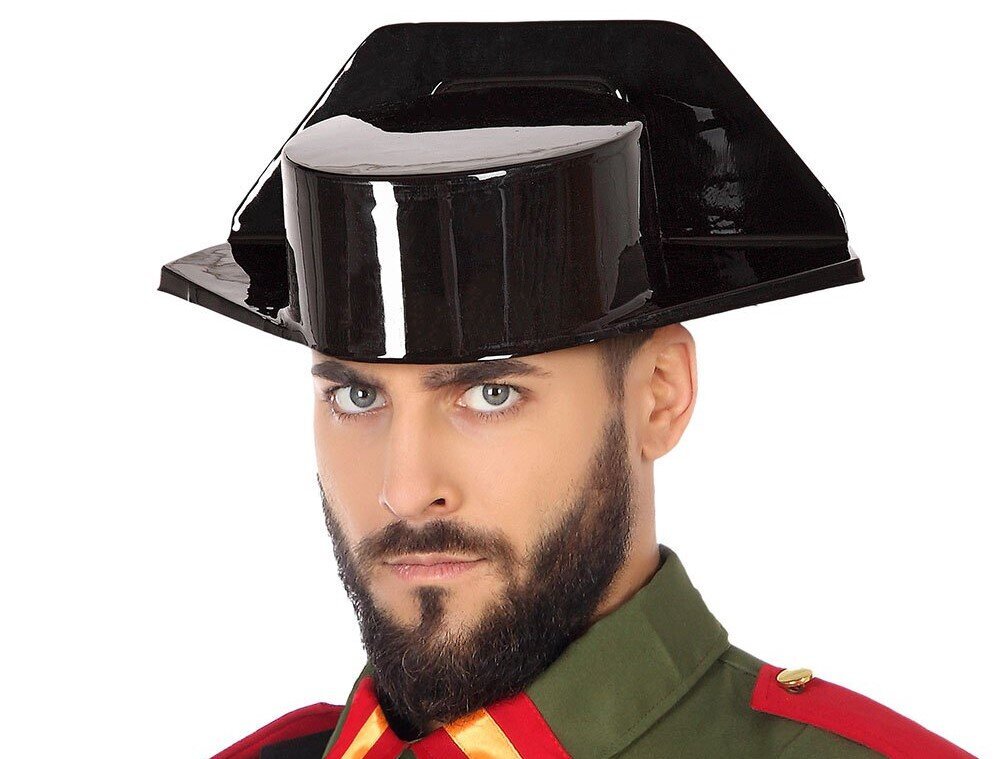
Initially these were leather hats, but they were later made from a cheap material resembling patent leather to reduce the financial cost of producing hundreds of thousands of hats.
During the Franco dictatorship, it was the tricornio hat that symbolized the merciless will of the “caudillo” (Spanish dictator). The poet Federico García Lorca depicted the brutality of the Guardia Civil in many of his poems and pointed out the "magical" power of the tricornio hat, which makes anyone wearing it incredibly cruel.
Beginning in 1989, the tricornio was worn only as part of the dress uniform for ceremonies, parades and special occasions, as well as in some operational services, such as embassy security or airport security.




